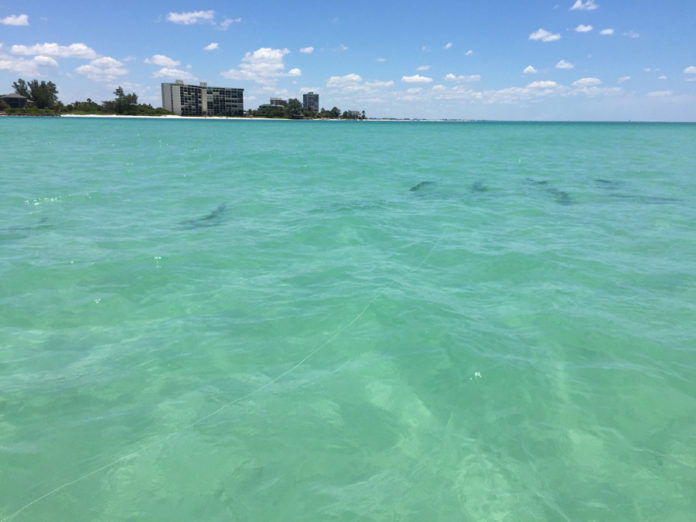Written by: Evan Jones
Photo by Evan Jones
The Stream to Salt series is designed to help anglers of all abilities identify and overcome specific challenges arising from subconsciously applying “trout brain” to saltwater fly fishing. The goal is not simply to provide a list of new habits to memorize, but also to foster a deeper understanding of why some of the habits and assumptions developed while trout fishing can be detrimental in the salt, and how to adjust.
The single most frequently repeated advice for fly anglers new to saltwater is, “Remember to strip set, and not to trout set.” Fly-fishers spend years perfecting their trout sets, honing their reflexes until they can lift the rod the instant a trout touches the fly, and old habits are hard to break, which is probably why this one gets so much traction.
Avoiding the dreaded trout set involves more than simply resisting the urge to lift the rod, however. You must also resist the urge to set the hook right away. Quick reaction time isn’t just unnecessary for an effective strip set, and it’s often counterproductive, since too much tension on the line too soon can easily pull the fly right back out of the fish’s mouth.
You don’t have to worry too much about a saltwater fish spitting out your fly once they’ve eaten it, as a finicky trout might. Saltwater fish are used to their food biting or pinching or poking back, and they’ve developed very bony mouths with few nerve endings in response. Many don’t even realize they’ve been hooked until the line begins to turn their heads unexpectedly, so there’s no rush to set the hook like there is for trout.
The best reaction to seeing a saltwater fish eat your fly is to just continue stripping, and wait until you actually feel tension on the line before performing a strip-set. While this is admittedly a lot easier said than done, it gives the hook more time and opportunity to find a sticking point, making it more likely to hold when you do begin to apply pressure. There are few moments more frustrating than watching a fish eat your fly, only to see it slip right back out of their mouth after a failed strip-set, so remember to leave your trout brain at home and keep your reactions slow to maximize your chances for success.
Credit: Source link































